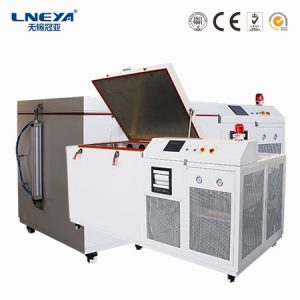How to choose laser chiller?

The term laser is an acronym for light amplification by stimulated radiation. When the electrons in the atoms of optical materials (such as glass, crystal or gas) absorb the energy of the current, a laser is generated. The increased energy excites electrons and moves their orbits from low energy to high energy to produce electromagnetic radiation. In normal light, light waves move in different wavelengths and directions. Each wavelength has a different color, with peaks and valleys. The light looks white when viewed with the naked eye. In a laser beam, light is coherent and moves in the same direction, and all wave peaks and troughs move together. Amplified light can produce a lot of heat energy. When the light emitted by the laser shines on the surface, its light energy changes from light energy to heat energy, thus cutting, melting or burning materials. The result of this process is that the heat generated must be removed to ensure the efficiency of the laser and avoid damaging it. Industrial lasers use a variety of coolers and cooling methods to maintain a constant temperature. The laser cooler is designed to remove heat from the laser process to maintain the laser wavelength and ensure the quality of the laser beam. Powerful water-cooled chillers are used with high-power lasers, while low-power lasers can be cooled in other ways, such as various types of fans.
When selecting a laser refrigerator, it is important to select a refrigerator that matches the type of laser used. Laser cooler is used for: UV laser CO2 laser glass tube Semiconductor CO2 RF tube laser Fiber laser for cutting, marking and engraving.
Cold plate: it is a key component for cooling the laser and is used together with the circulating cooler system. There are several forms of cold plate, including tubular and aluminum vacuum brazing.
Tubular cold plate is a flat metal plate with channels on one or both sides of the plate for fixing tubes bent back and forth on the surface of the plate. The coolant flows to the laser beam through a pipe. The inlet and outlet of the pipe are connected to the coolant source. The pipe has good surface to surface contact to optimize heat transfer.
The aluminum vacuum brazing cold plate has a corrugated aluminum fin, which is brazed to the fluid cavity below the cold plate mounting surface. The fins in the cold plate generate turbulence, which reduces the thermal resistance. The size of aluminum vacuum brazing cold plate varies from several inches to hundreds of inches.
The cold plate can be installed on the laser and receive coolant from the cooler. The hot liquid from the process is then transferred back to the cooler. In some cases, the cold plate can be designed as the electrode of the laser system.
Related recommendations
-
Treatment of organic waste gas by condensation method
1875Condensation treatment of organic waste gas equipment should pay attention to its performance when selecting. It is very necessary to choose high-performance condensation method to treat organic waste gas. So what is the use of organic waste gas f...
View details -
Low-temperature refrigerator manufacturers’ energy adjustment instructions
1324The energy regulation of low-temperature refrigerator manufacturers' equipment during operation is also very important. In order to adapt to the change of energy load, Wuxi Guanya (LNEYA) low-temperature refrigerator manufacturers should pay atten...
View details -
Temperature control system for reaction kettle
1211The reaction kettle temperature control system is an automated equipment used to precisely control the temperature of materials inside the reaction kettle, widely used in fields such as chemical, pharmaceutical, biochemical, and material sci...
View details -
Advantages of bearing cryogenic treatment equipment
1780One of the names of the ultra-low temperature freezer is the bearing cryogenic treatment equipment. Wuxi Guanya LNEYA's ultra-low temperature freezer is designed for large volume ratio; large capacity bearing capacity design; can set the temperatu...
View details
 LNEYA Industrial Chillers Manufacturer Supplier
LNEYA Industrial Chillers Manufacturer Supplier














